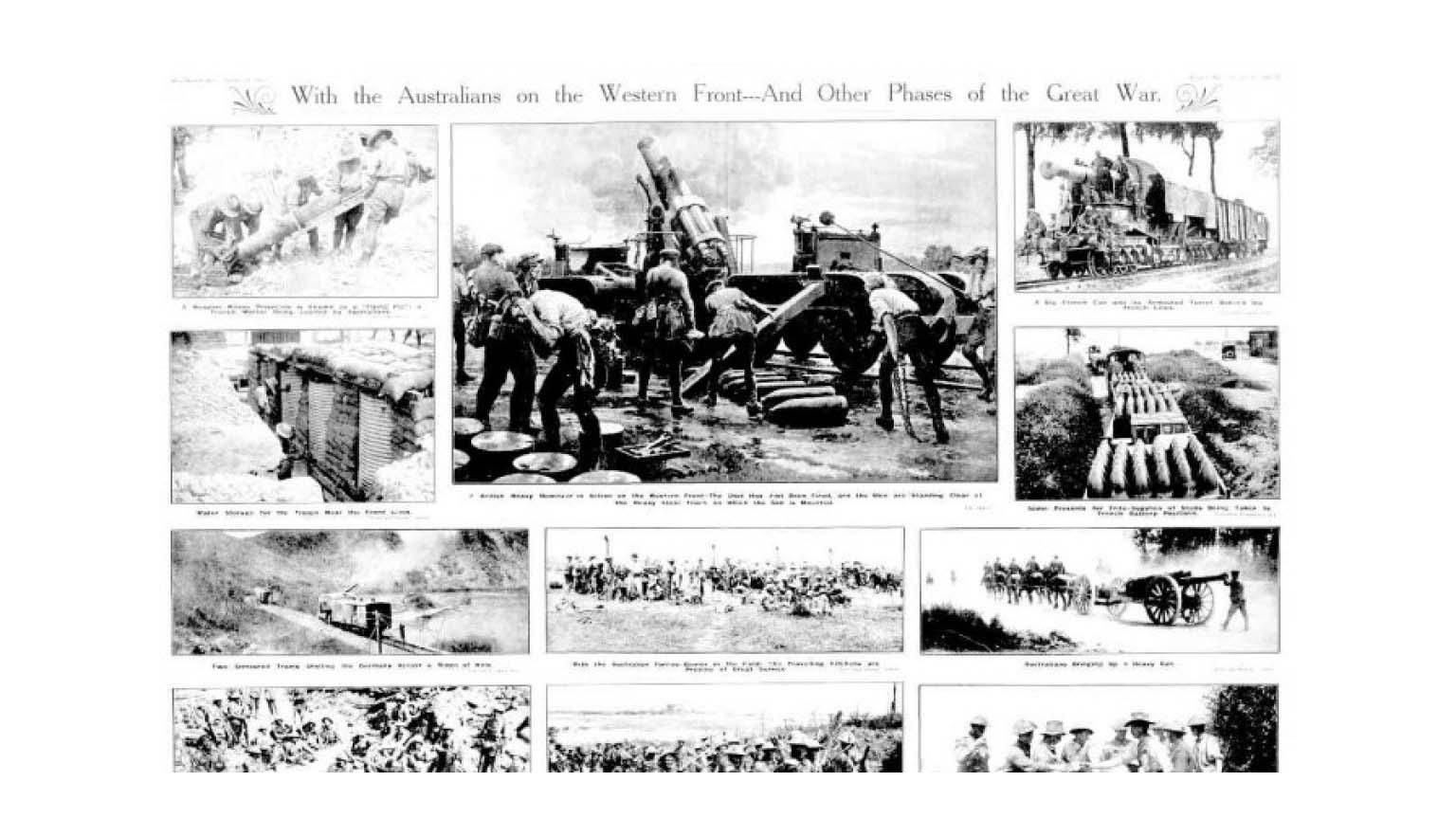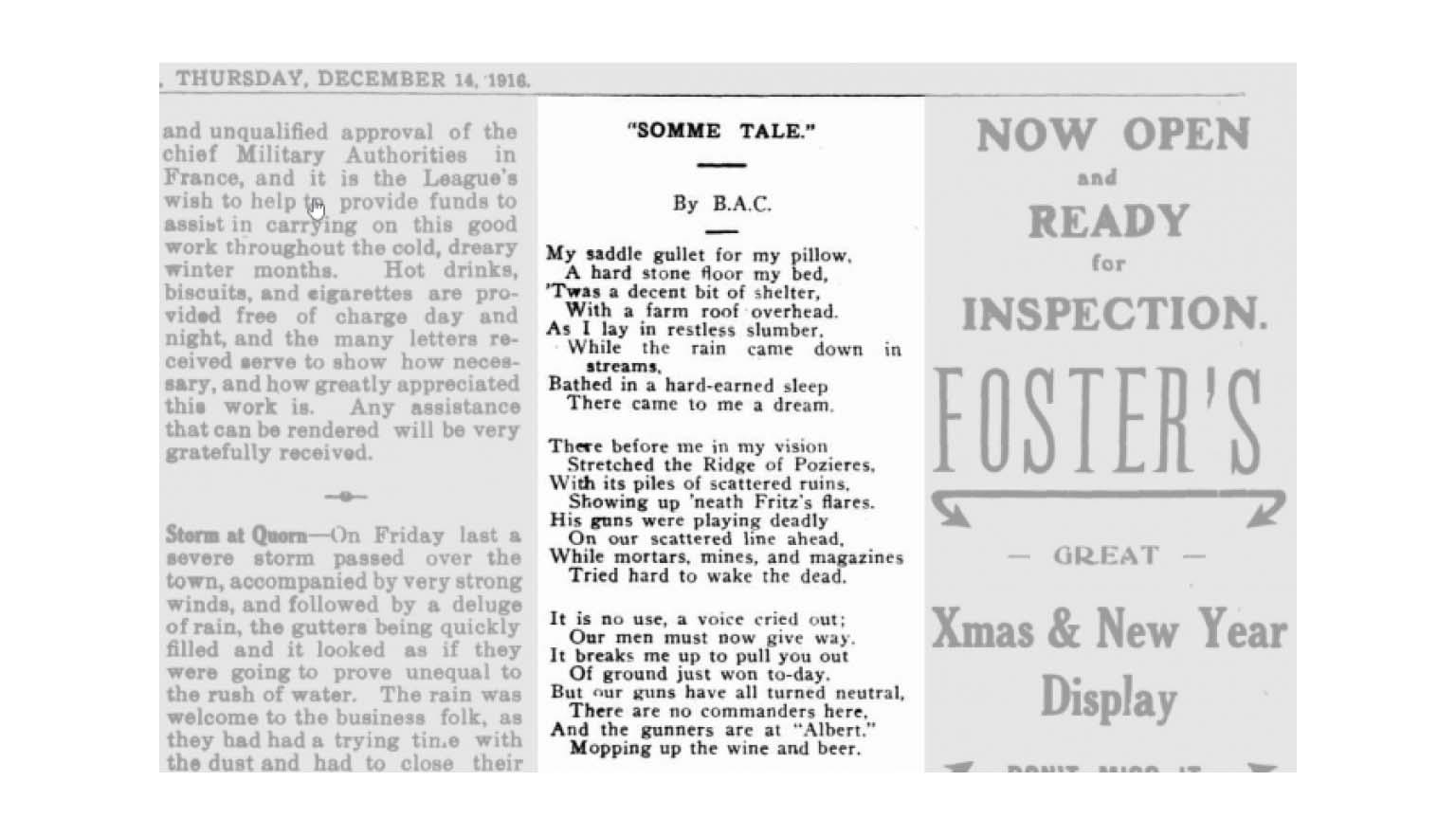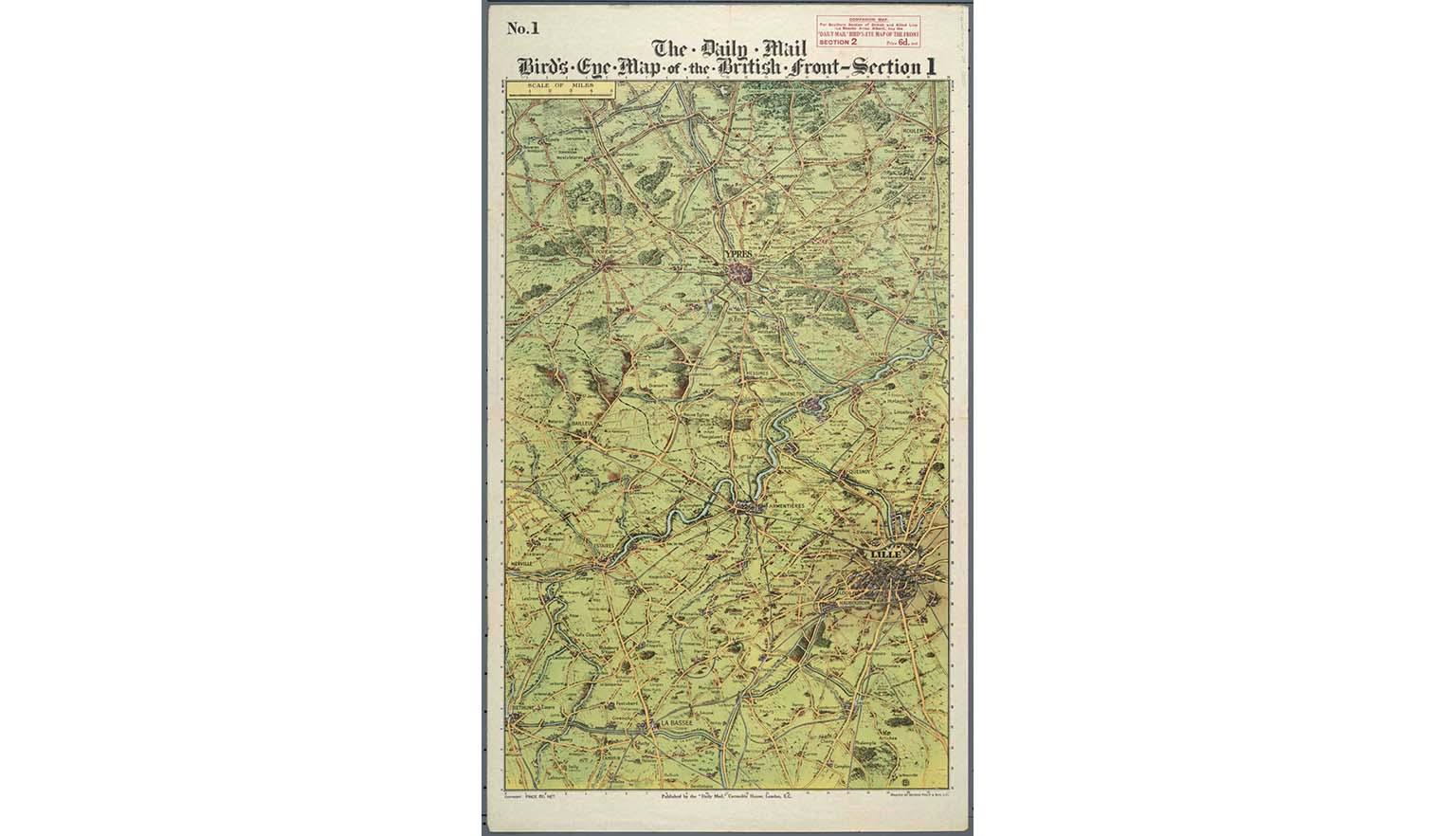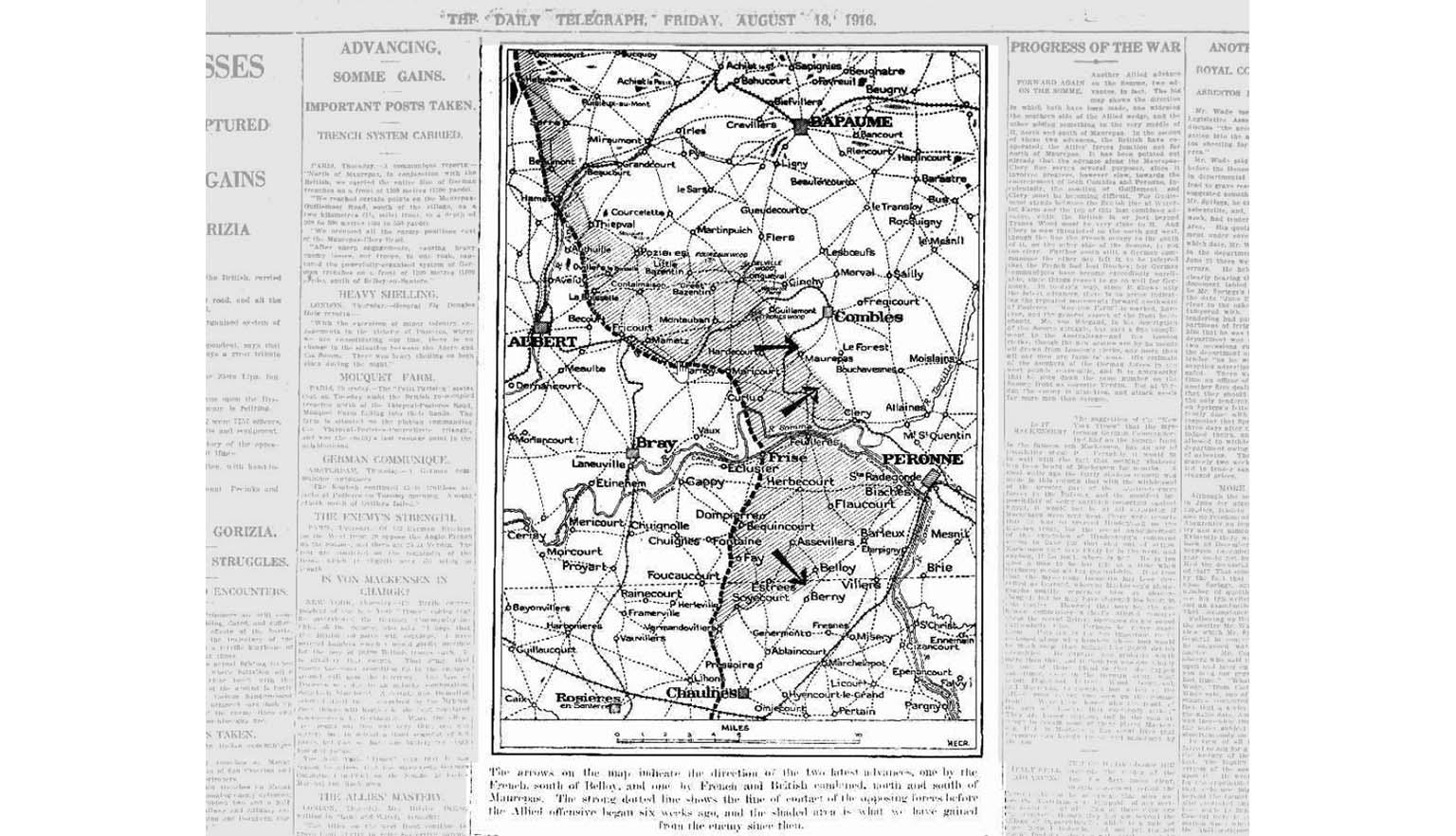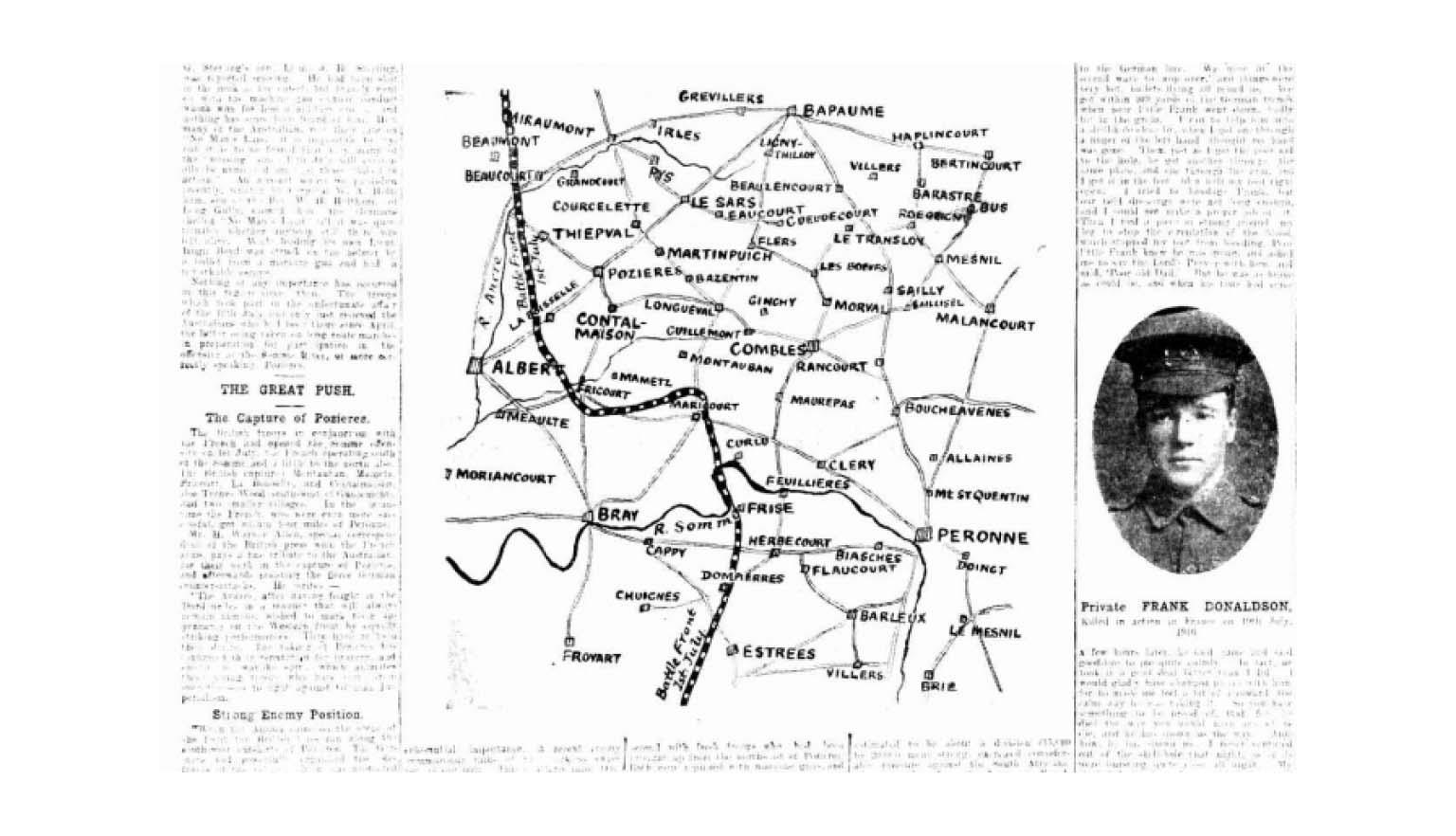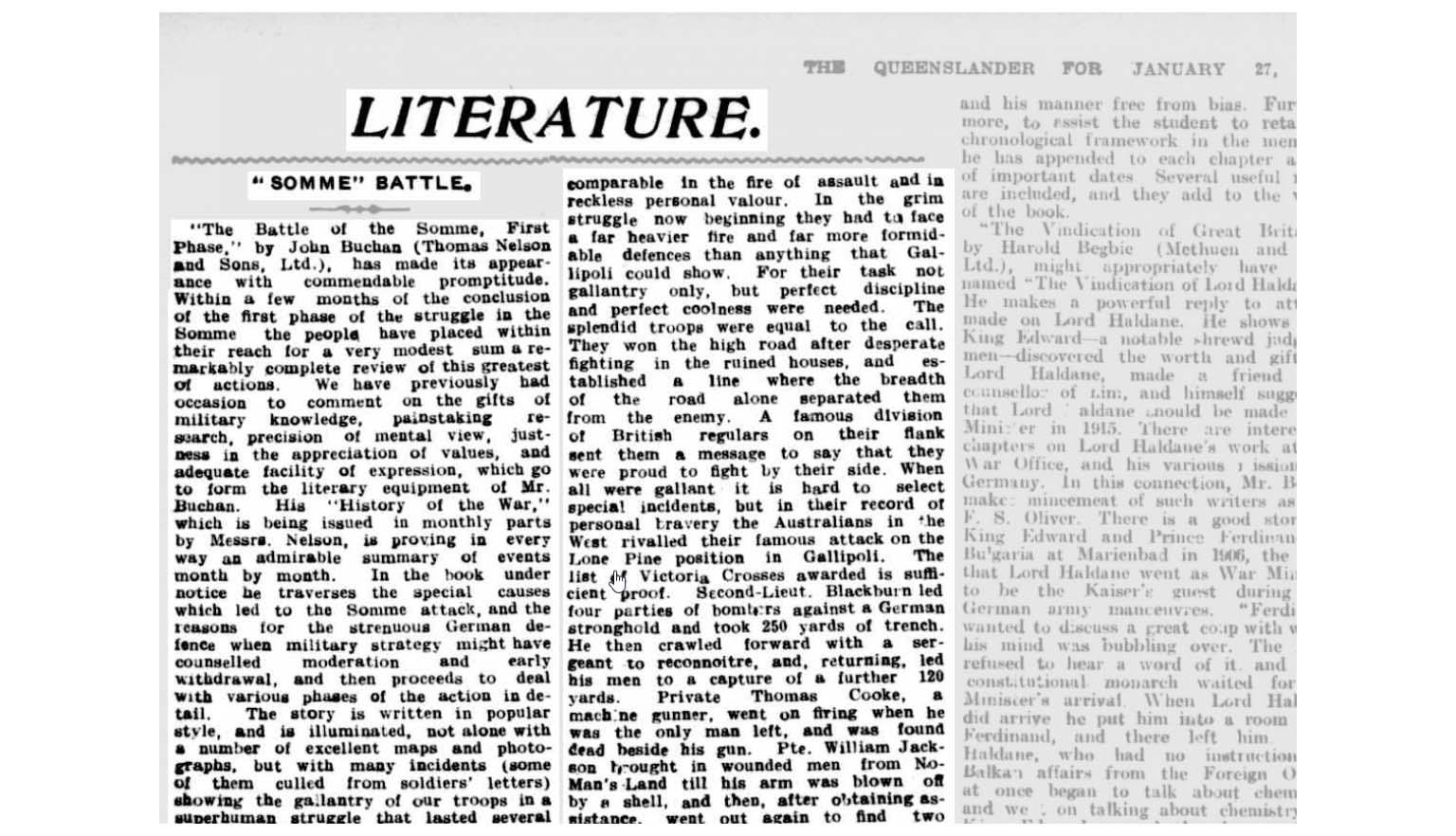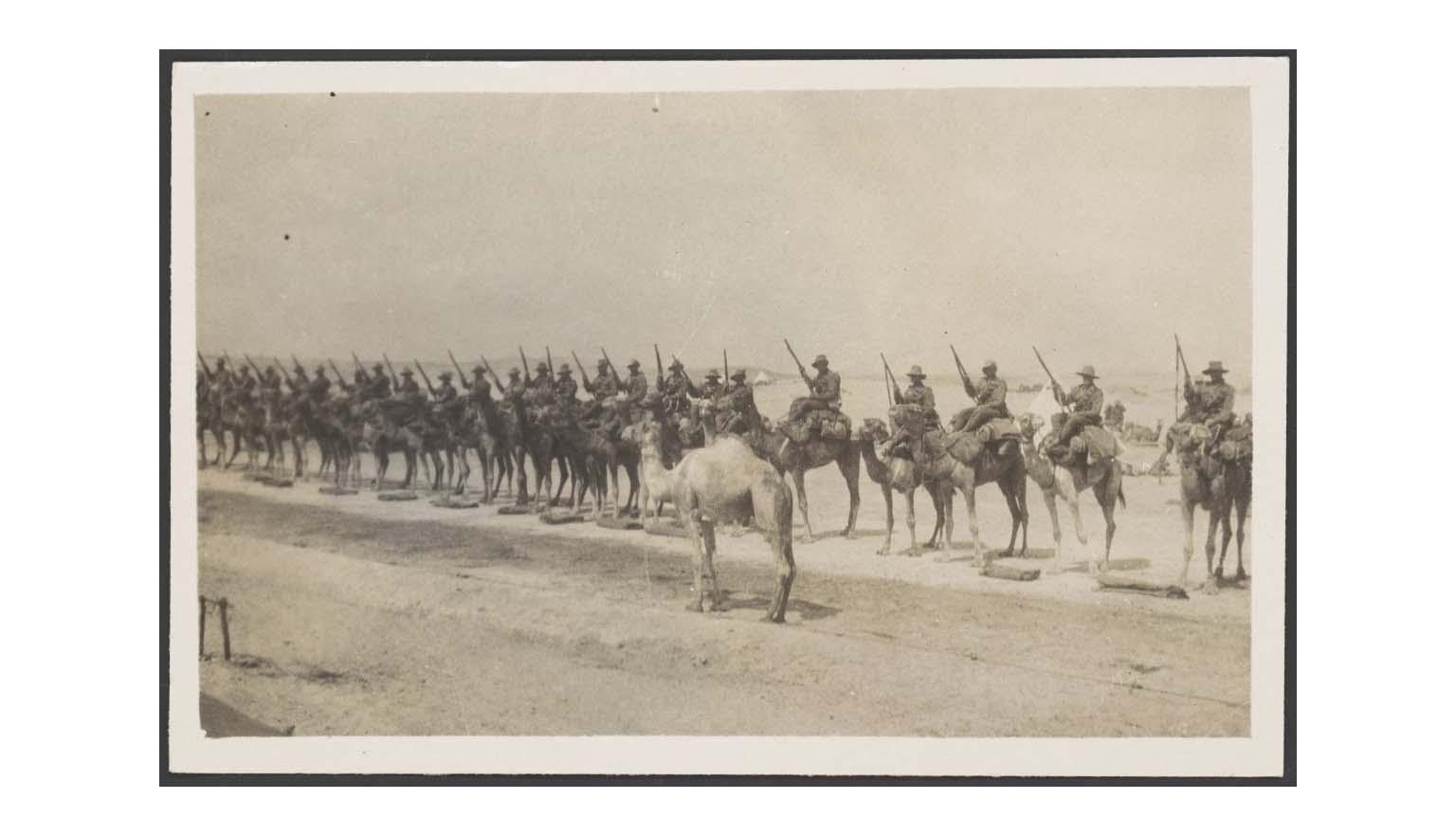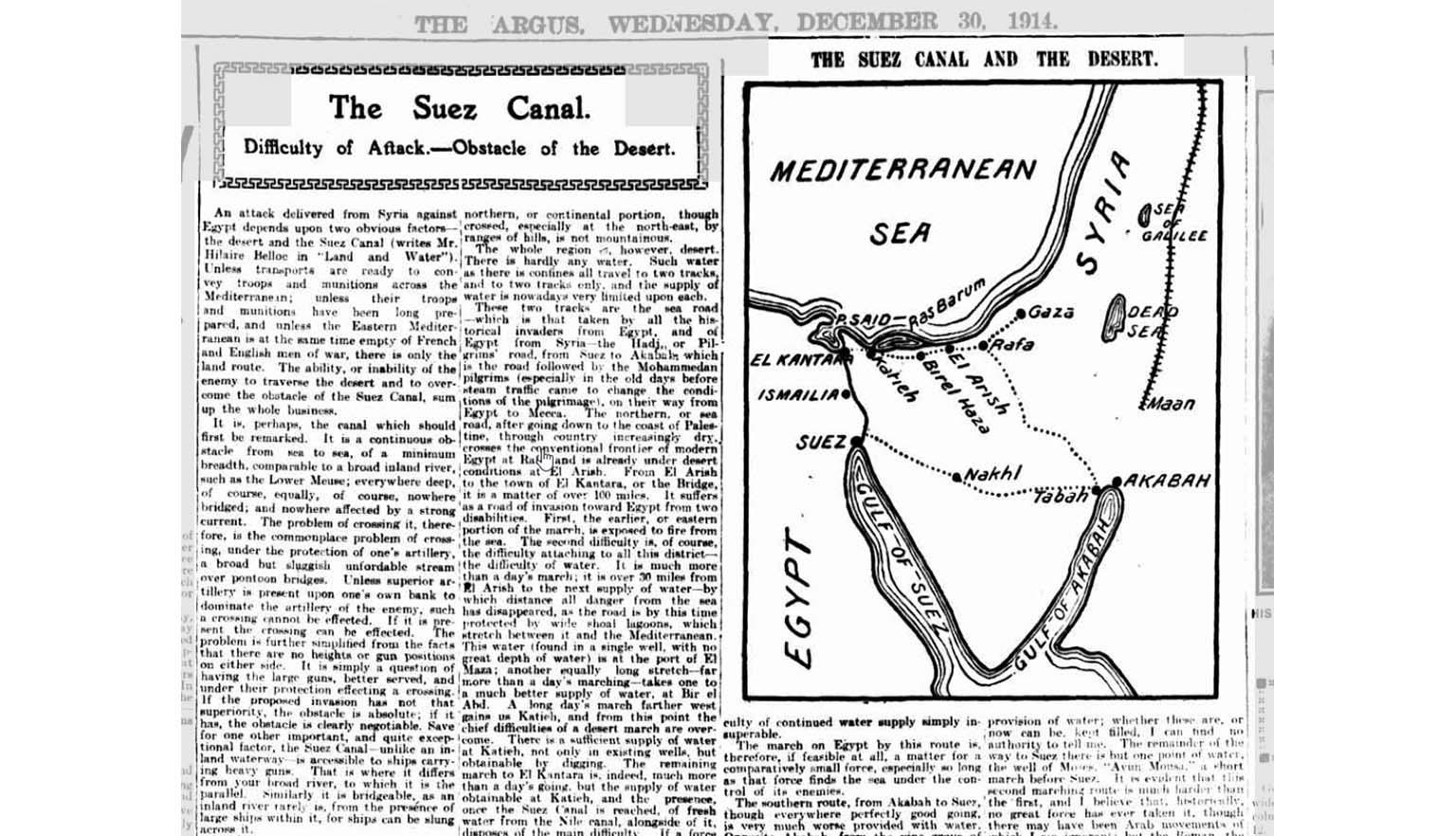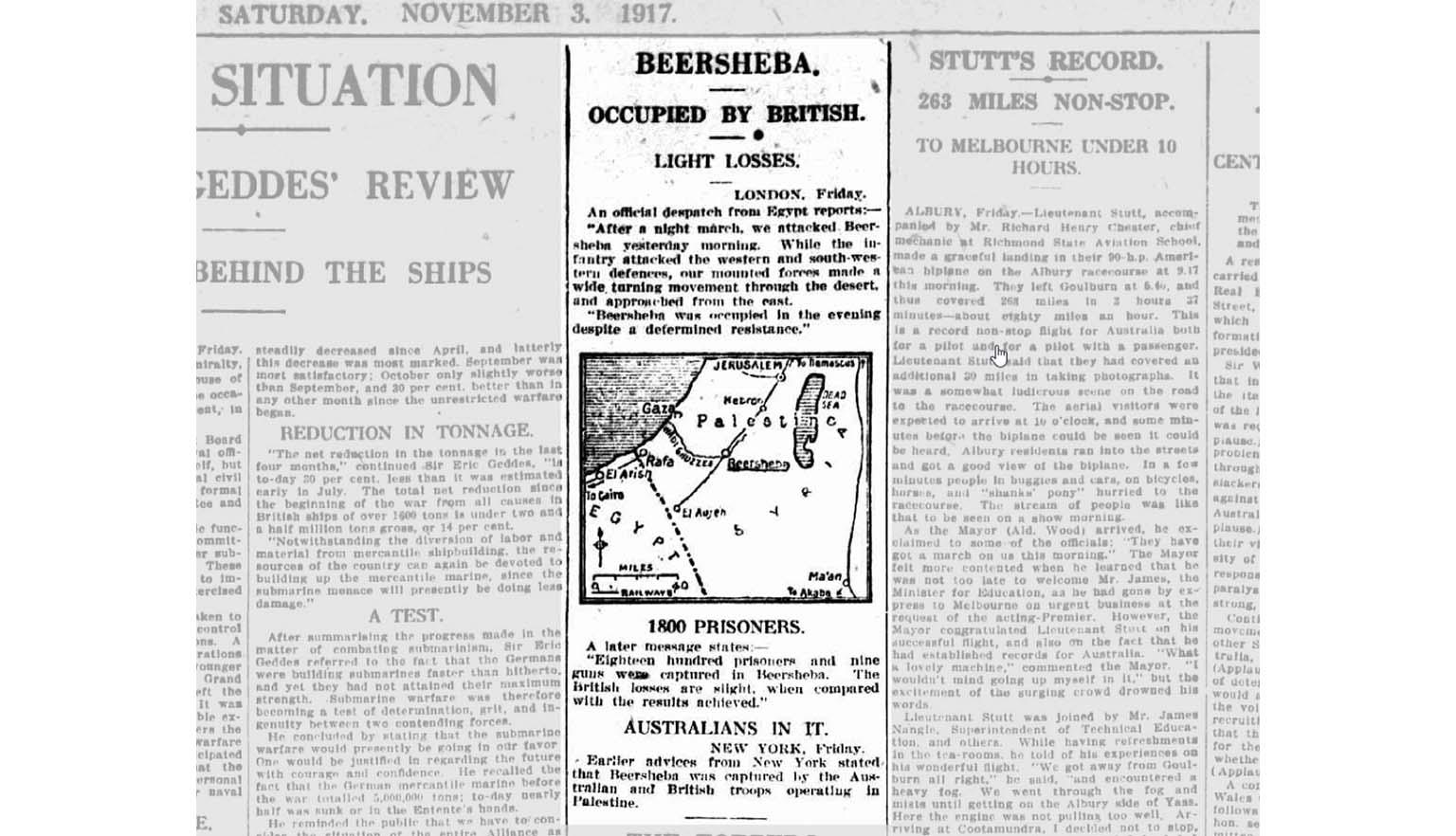World War 1: 1916
The Western Front Campaign (March 1916)
Most of the AIF remained on the Western Front until the signing of the armistice in 1918. By 1916, the war had already been raging across Europe for two years. When Australia’s troops arrived, both sides had dug in, creating a stalemate across the French battlefields.
The conditions on the Western Front were harsh. Soldiers lived and fought in trenches, enduring constant shelling and exposure to rain and mud. The endless barrage of explosions turned the earth into a wasteland. Rats, lice, and other insects thrived in the trenches, adding to the soldiers' discomfort.
Significant battles
- Fromelles (19 July 1916)
Somme Offensive - Western Front (1916–November 1917)
The Somme Offensives aim was to break the stalemate of trench warfare and relieve pressure on French forces at Verdun. The battle was notorious for its high casualties, especially on the first day, which remains the bloodiest in British history.
Australian soldiers played a significant role, particularly in the Battle of Pozières, enduring tough conditions like constant bombardment. While the battle resulted in limited territorial gains, it showed the brutal nature of trench warfare and the heavy loss of life.
Significant battles
- Battle of Pozières (23 July–3 September 1916)
- Mouquet Farm (23 July–3 September 1916)
Sinai Palestine Campaign (1916–1917)
After Gallipoli, a small number of Australian mounted troops remained behind in Egypt to protect the Suez Canal and to defend British interests in the region. This campaign did not capture as much attention as the Western Front but became famous for the rise of the Australian Light Horse. The Light Horse, alongside the Imperial Camel Corps, proved highly effective in desert warfare.
Fighting in the desert posed its own challenges. The soldiers contended with extreme heat, endless sand dunes, and shortages of essential supplies like water and shelter.
Throughout the war, the Australian Light Horse made significant gains in the Sinai and Palestine region, capturing Gaza and Jerusalem, and eventually advancing into Syria and Lebanon, with Damascus falling in 1918.
Significant battles
- Battle of Romani (August 1916)
